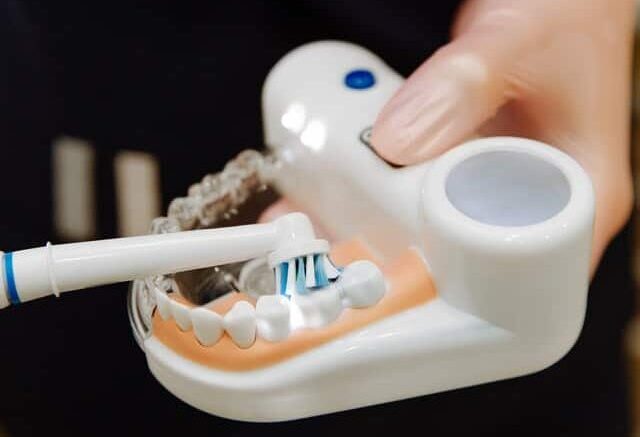All About Restorative Dental Treatment
Restorative dental treatment is the repair and treatment of the hard tissue losses in the teeth that occur due to decay or reasons other than decay (accidents, medical conditions, etc.).
It is a dental treatment that restores the patient’s aesthetic and functional loss. People of all ages, professions and genders can undergo restorative dental treatments.
The treatment can be applied to children and seniors. The products used during restoration are biocompatible materials that provide an aesthetic appearance without harming the teeth.
With the biocompatible materials used, the losses on the hard surface of the tooth are treated and a pleasant appearance and a beautiful smile are provided.
The biocompatibility of the materials used allows easy application of the dental treatment even in advanced age (65 years of age and above) and even in oncology patients.

All about the dental treatment
What is Restorative Dental Filling?
Restorative dental fillings are tooth-colored white fillings. These are considered newer and more aesthetic fillings, compared to the traditional amalgam fillings, which are grey-black.
Aesthetic fillings that provide an aesthetic appearance in the teeth with their white color are very long-lasting and are much healthier than amalgam fillings due to their biocompatibility.
Another type of filling is porcelain. While composite fillings are preferred for the anterior regions, porcelain fillings are preferred for the posterior teeth due to their resistance to a hard structure such as tooth enamel and biting force.
Aesthetic pre-fillings, that is, bondings, are frequently used to extend the tooth length or to close unwanted tooth gaps.
What Are Inlay and Onlay Fillings?
Inlay and onlay fillings can be used in people who do not have enough dental tissue for filling. Apart from this, they are an aesthetic treatment method applied to teeth that are not damaged enough to be closed.
After the examination is performed by a dental specialist, the measurement of the area where the filling will be made is taken, prepared in a laboratory environment, and placed in the space on the tooth in the next session.
Is Restorative Dental Treatment Generally Preferred For An Aesthetic Smile?
Restorative dental treatment is both aesthetic and functional. Although it is mostly considered as a white filling applied to decayed teeth, the treatment also involves other methods to correct the deterioration of the tooth forms caused by decay or other issues.
But it doesn’t end there. It applies the principles of preventive dentistry that will take measures to restore the function and aesthetics of the tooth, and most importantly, prevent the recurrence of the elements that caused the problem.
In short, the treatment methods applied are not only for aesthetic purposes but also to provide and protect the teeth’ functionality.
What Should Be Considered After Restorative Dental Treatment?
There is no strict rule of thumb after the treatment. The occurrence of sensitivity in the tooth after filling depends on how large and how deep the decay is.
After fillings for deep and large decays, sensitivity may be felt for a temporary period such as 2-3 days.
What Are The Methods Used For Whitening Teeth?
Office type and home type whitening methods can be applied for teeth whitening. In-office type teeth whitening process; It is a method applied by the dentist in the office (office bleaching).
It is applied under the control of the dentist and fast whitening is observed in the teeth in 1-3 sessions.
Home type whitening process; It is a method applied at home by the patient himself (home bleaching).
By placing a bleaching agent into the plaques prepared specifically for the measurements taken from the patient, the teeth are whitened for a longer time. A whitening agent is used for 7-15 days. In some cases, both methods are applied together.
What Are The Requirements Before Bleaching Teeth?
Decays should be treated before teeth are whitened. The reason for this is that the whitening solution can reach the inner parts of the tooth by passing through the various areas.
If this happens, the sensitivity of the tooth increases. Bleaching also does not work on roots that do not have an enamel layer.
See Also:
What Is Dental Diastema? Symptoms And Treatment

As a nutritionist, I research, find and experiment with recipes, natural diets and meal plans for weight loss, bodybuilding, and detoxing.
